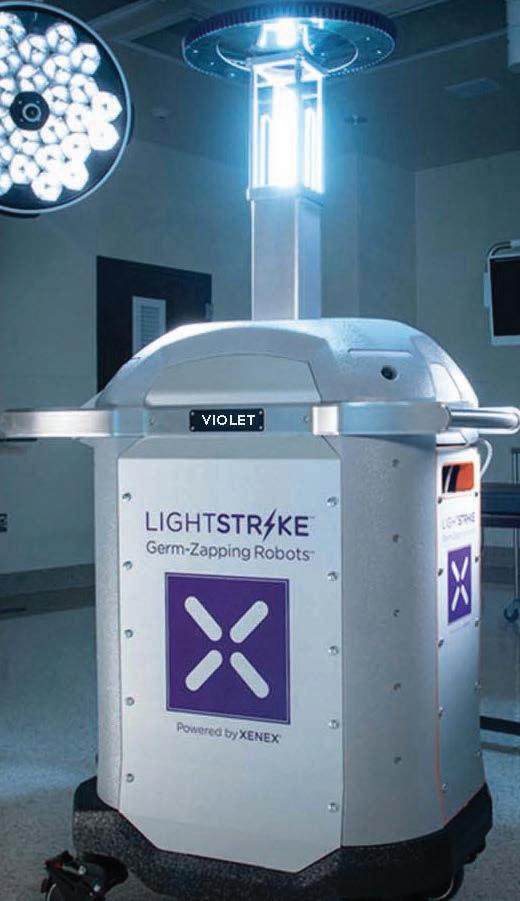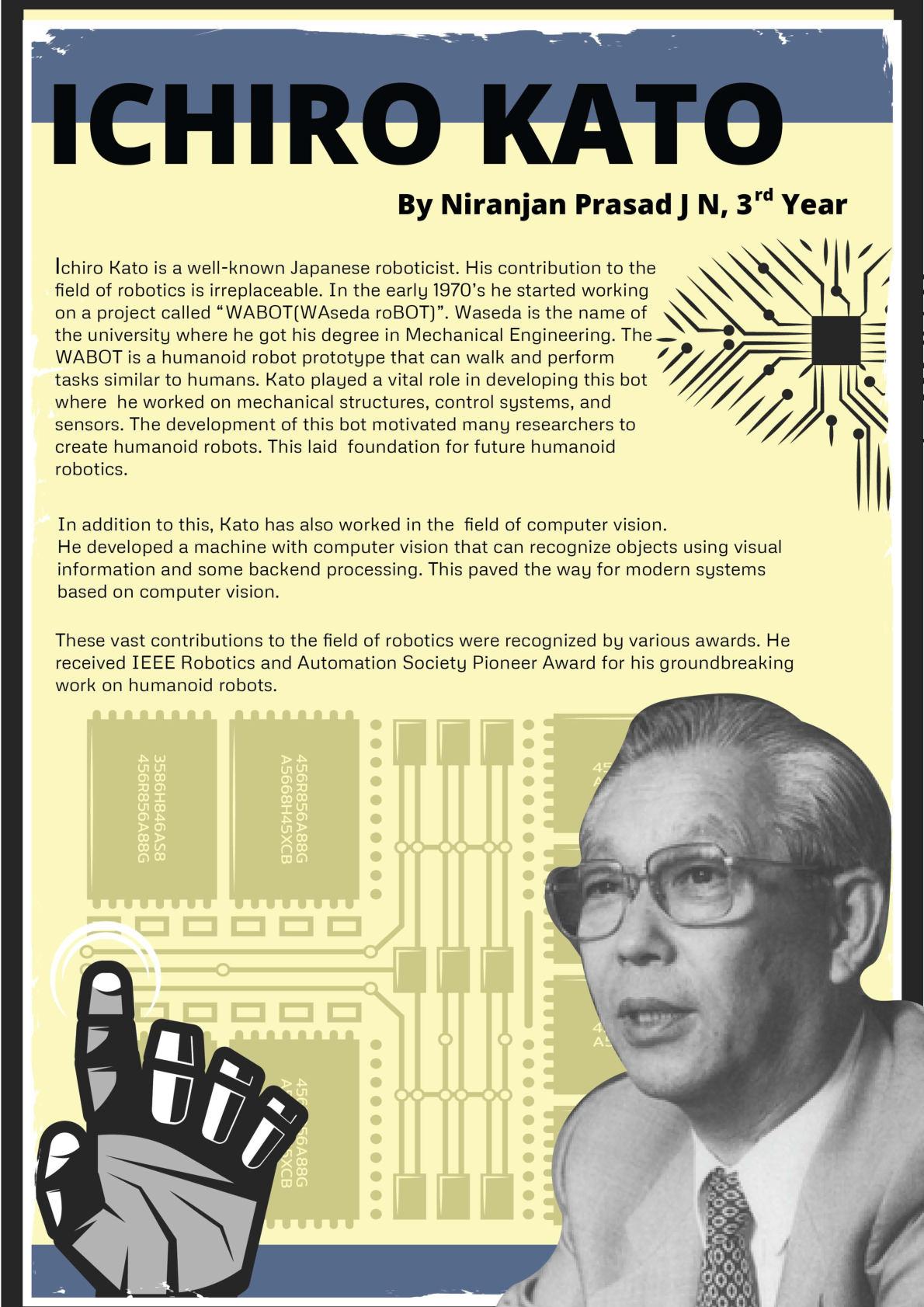
1 minute read
SAUL BOT
By Amrutha Dhanabalan, 3rd Year
Patient care is a high priority in hospitals. The sick should not get any sicker due to the hospital environment. Therefore, cleanline ss in hospitals is not just a rule but a dire necessity.
Advertisement
Most hospitals recruit a human workforce to do the cleaning so that germs from one person do not spread to another. However, humans are not physically capable of killing all the microscopic microorganisms that are not visible to the naked eye. Some can have strong cell walls and protective envelopes that protect them from the germ-killing solution a human would employ to succeed.
A germ-zapping robot named “Saul” 5 feet 2 inches tall, was US Air Force’s newest staff member. The potential to kill pathogens like Ebola makes this robot a hero in a hospital setting. This is something straight out of a fictional movie, but reality can often surprise you.
The bacterial cell walls can be highly resistant, making them tough to beat. But these are easily split open by the robot’s high-intensity pulses, and high-energy ultraviolet rays which are 25,000 times brighter than fluorescent lights. It has been found that hospitals that were using
Saul achieved 60 per cent drop-in infection rates, which in many cases, was able to combat dangerous pathogens that can be life-threatening in many cases. These infection rates are known to cause about 45 per cent of deaths during the treatment procedure, so we are essentially talking about saving lives here, not just keeping a place clean.
There is no denying that viruses can cause chaos, and we are more than willing to agree with that statement concerning the pandemic we survived. The Ebola outbreak, which has had an average death rate of about 50 per cent, shook the planet in 2014 when Saul was being developed. And its use has only become more prevalent since then.
Saul can kill a single strand of ribonucleic acid within 5 minutes at an efficiency of 99.9 per cent. Viruses like Ebola are no exception to this. What a human cannot do in many hours, the robot does in a few minutes with efficiency unmatched by any cleaning chemical or equipment. This technological marvel is simply a revolution in the medical industry.
About testing, Xenex Healthcare Services, credited with developing the robot, has tested it on 22 microorganisms and has studied nearly 2000 samples in several labs. It kills pathogens two meters out in any direction. Saul performs the task of treating soldiers returning from West Africa. Hospital workers are learning this technology to disinfect the operating rooms between treatment procedures. It wouldn’t be wrong if one said Saul is preventing a pandemic here and eradicating and controlling disease-causing pathogens.









